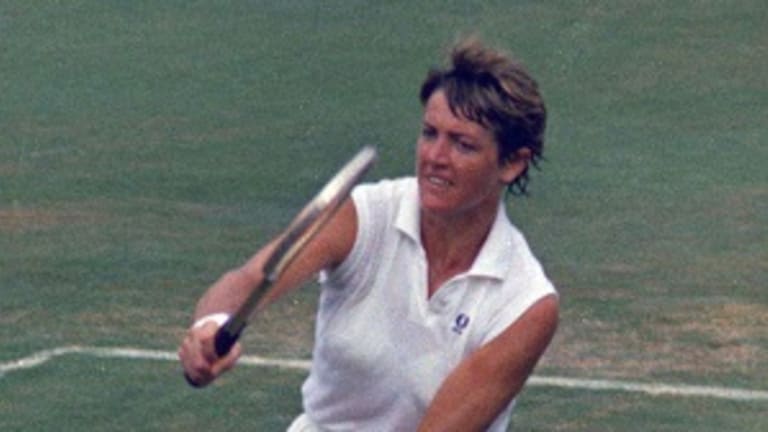Alright, tennis fans: Who is Jan Lehane O’Neill, and what exactly is her claim to fame?
Answer: She’s the woman who lost to Margaret Court in four consecutive Australian Open finals, starting in 1960. And that wasn’t the whole of the torments inflicted on her by the all-time women’s Grand Slam singles champion. O'Neill also made two doubles finals in Australia’s major, but lost each time—with Court across the net.
O’Neill was a good player, ranked in the Top 10 for three years in the early 1960s (and as high as No. 7 in 1963). Of course, this was before the computer age, so the rankings I cited were subjectively issued by Lance Tingay, a British journalist who loved tennis and labored for decades covering the game for the Daily Telegraph and the Daily Mail. Still, they were the best measure we had at the time, and of the time.
O’Neill played the Australian Open 13 times, which was more than twice as many times as she entered any other major (she played the U.S. Open a mere three times in her career). In addition to those four finals, O’Neill also appeared in two additional semifinals. Yet she made it as far as the quarterfinals at the other three majors just seven times overall.
I delved into O’Neill’s record because of what her CV says about the Australian Open, the tournament that has done so much to obfuscate tennis history. And examining O’Neill also says much about her nemesis, Court. For the Aussie won 11 singles titles at the Australian Open, which is nearly half of her historic haul of 24 majors.
Furthermore, Court bagged seven of those Australian Open titles before the advent of Open tennis in 1968, and a total of 13 majors before the game welcomed professional players back into the Grand Slam fold.
Court’s nearest rival in the record books is Steffi Graf, with 22 major singles titles, and her closest active rival is Serena Williams, with 17 Slams. It seems that Court’s record may never be broken. But while Court was a great player, I’m not sure she was 24 majors great. However I am convinced that no other player’s record is marred by such a great asterisk, which is a great shame.
You might think that as the Open era rolls on, such a thorny and unsatisfying situation would fade into oblivion. But this one won’t, because it can’t. Court’s record will only loom larger and larger as great players come and go; there may be no legitimate shot at wiping out that vestigial asterisk the way Pete Sampras did, when he broke Roy Emerson’s mark of 12 majors. The men’s Grand Slam singles title record now held by Roger Federer is an Open era achievement, and it will never bear an asterisk—unless the structure of the game undergoes some other revolution.
